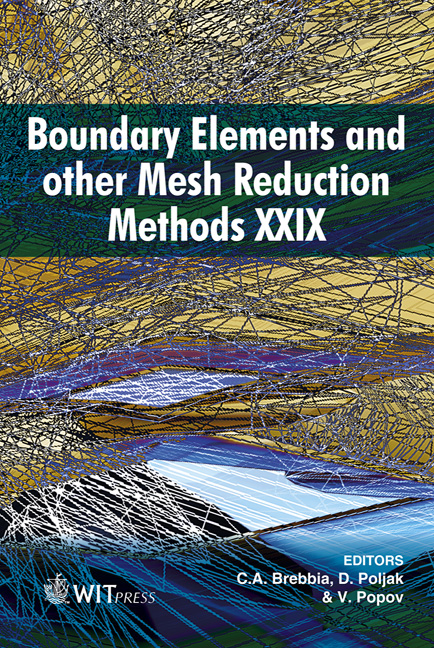Inmost Singularities And Appropriate Quadrature Rules In The Boundary Element Method
Price
Free (open access)
Transaction
Volume
44
Pages
8
Published
2007
Size
397 kb
Paper DOI
10.2495/BE070141
Copyright
WIT Press
Author(s)
E. E. Theotokoglou & G. Tsamasphyros
Abstract
The solution of singular integral equations (SIEs), taking into consideration the particular behaviour of its regular kernel and its right hand side function, is investigated in this paper. In particular, the problems appearing in the solution of singular integral equations in the boundary element method are verified. It is shown that the behaviour of singular integral equations does not depend only on the behaviour of the regular kernel but on the behaviour of the unknown function. Keywords: singular integral equation, singularities, nearby poles, elasticity, quadrature formula, numerical integration, boundary element method. 1 Introduction Many problems in the boundary element method can be reduced to a singular integral equation or to systems of singular integral equations [1]. For the solution of these equations where the known functions are Hölder continuous, approximate solutions through numerical techniques preserving the correct nature of singularities of the unknown function, have been developed [1–10]. Problems in the numerical solution of singular integral equations appear because of the Cauchy singularities, either from the unknown function or from of the poles of the known functions. In addition the regular Kernels of the singular integral equation may have either nearby poles, or branch points, or jump discontinuities.
Keywords
singular integral equation, singularities, nearby poles, elasticity, quadrature formula, numerical integration, boundary element method.





